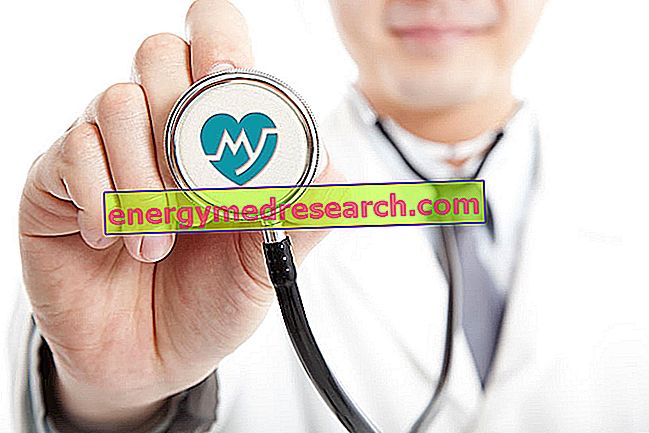Definition and Lipoproteins
The term dyslipidemia identifies any significant abnormality of the lipids present in the blood.
In the circulatory stream, lipids do not circulate alone, but are associated with particular transport proteins, with which they form the so-called lipoproteins.
In particular, free fatty acids, derived from the hydrolysis of triglycerides in adipose tissue, circulate in the blood mainly linked to albumin, while cholesterol and other fats (in particular phospholipids and triglycerides) are contained within five types of lipoprotein molecules.
| Lipoproteins * | chylomicrons | VLDL | LDL | HDL |
| Density (g / ml) | 0.93 | 0.95-1.006 | 1019-1063 | 1063-1210 |
| Diameter Å * | 800-5000 | 300-800 | 216 | 74-100 |
Composition: protein% lipid% | <2 98 | 8 ninety two | 22 78 | 50 50 |
| Lipid major | Triglycerides | Triglycerides | Cholesterol | Cholesterol |
| Main function | Transport of exogenous triglycerides (taken with food) | Transport of endogenous triglycerides (synthesized by the body) | Transport of cholesterol to peripheral tissues | Cholesterol transport from peripheral liver tissues |
| Origin | Intestine | Liver | VLDL metabolism | Intestine Liver |
* In addition to these, which are the best known, there is a fifth type of plasma lipoprotein, which however does not reach significant concentrations due to its rapid turnover. These are IDLs, or intermediate-density lipoproteins, which - produced due to the degradation of chylomicrons and VLDLs - are also known as "remnants", ie "remaining" from the degradation of other lipoproteins.
In industrialized countries, the most common dyslipedemia is hyperlipedemia, a condition due to the increase in blood levels of one or more fats, often associated with incorrect lifestyles and poor eating habits. This condition exposes the subject to a greater risk of suffering cardiovascular accidents such as angina, myocardial infarction, intermittent claudication and stroke.
To learn more: Symptoms Dyslipidemia
The following table shows the classification of hyperlipidemias in relation to the phenotype and specific type of lipoprotein that increases.

The most common hyperlipidemias are characterized by hypercholesterolemia (IIa), hypertriglyceridemia (IV) and the association of the two (hypercholesterolemia with hypertriglyceridemia, phenotype IIb).
However, we must not forget that the lipoprotein metabolism is closely interrelated and that the primitive metabolic alteration of a lipoprotein class is cascaded to different class lipoproteins, often resulting in an abnormality of the entire lipoprotein framework.
Causes
To the inevitable genetic component, which can affect more or less important the development of dyslipidemias, secondary risk factors are added, such as insulin resistance, diabetes mellitus, obesity, hypothyroidism, kidney and liver diseases, cholestatic syndromes, alcoholism, gout and some drugs (in particular estroprogestinic contraceptives and thiazide diuretics). In this sense, primary dyslipidemias (common in children) and secondary dyslipidemias (common in adults and the elderly) are distinguished.
In the former - including, for example, polygenic hypercholesterolemia, familial hypercholesterolemia and familial hypertriglyceridemia - the problem is mainly determined by a genetic anomaly; in the latter, the dyslipedemia is not congenital, but caused by one or more of the conditions listed above.
In general, the most common cause of secondary dyslipidemia is the combination of inappropriate nutrition (rich in cholesterol, calories and saturated fats) and physical inactivity.



